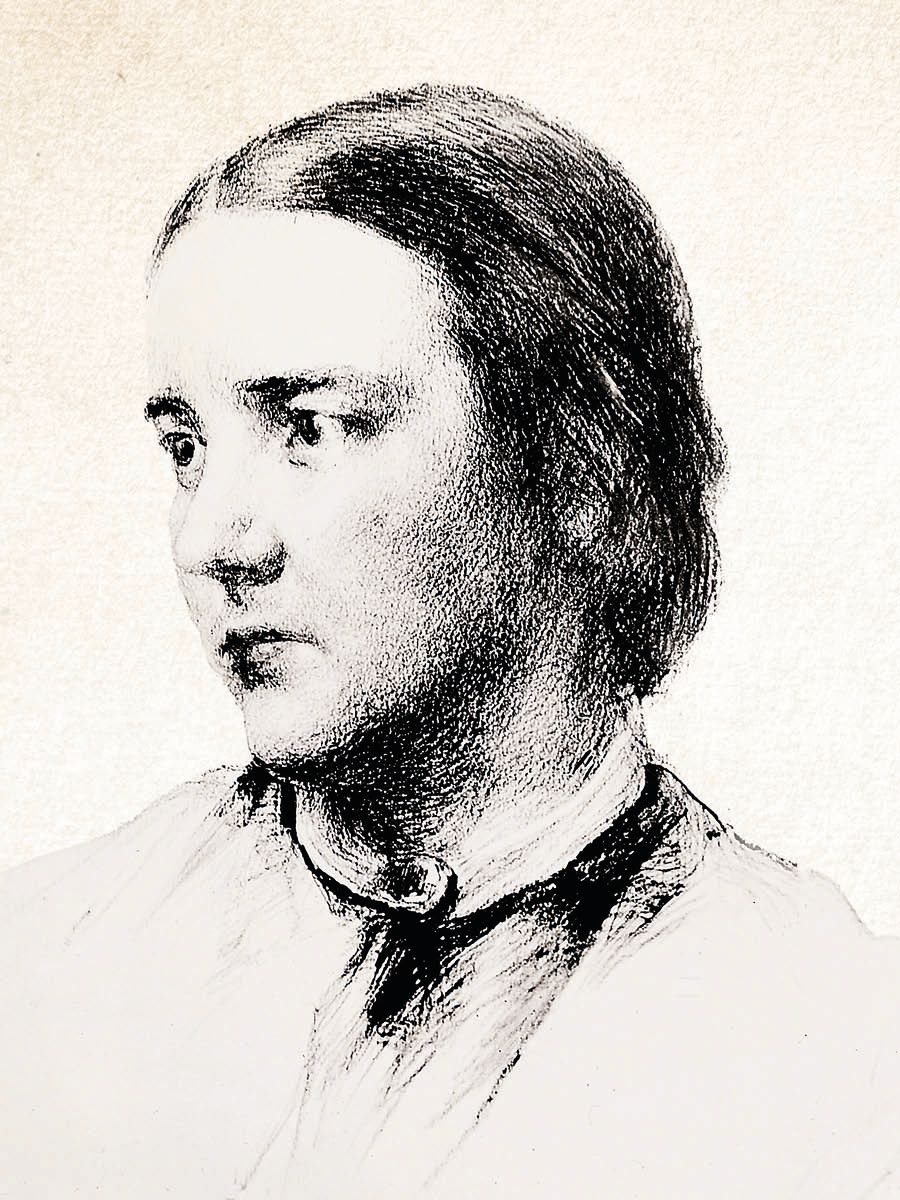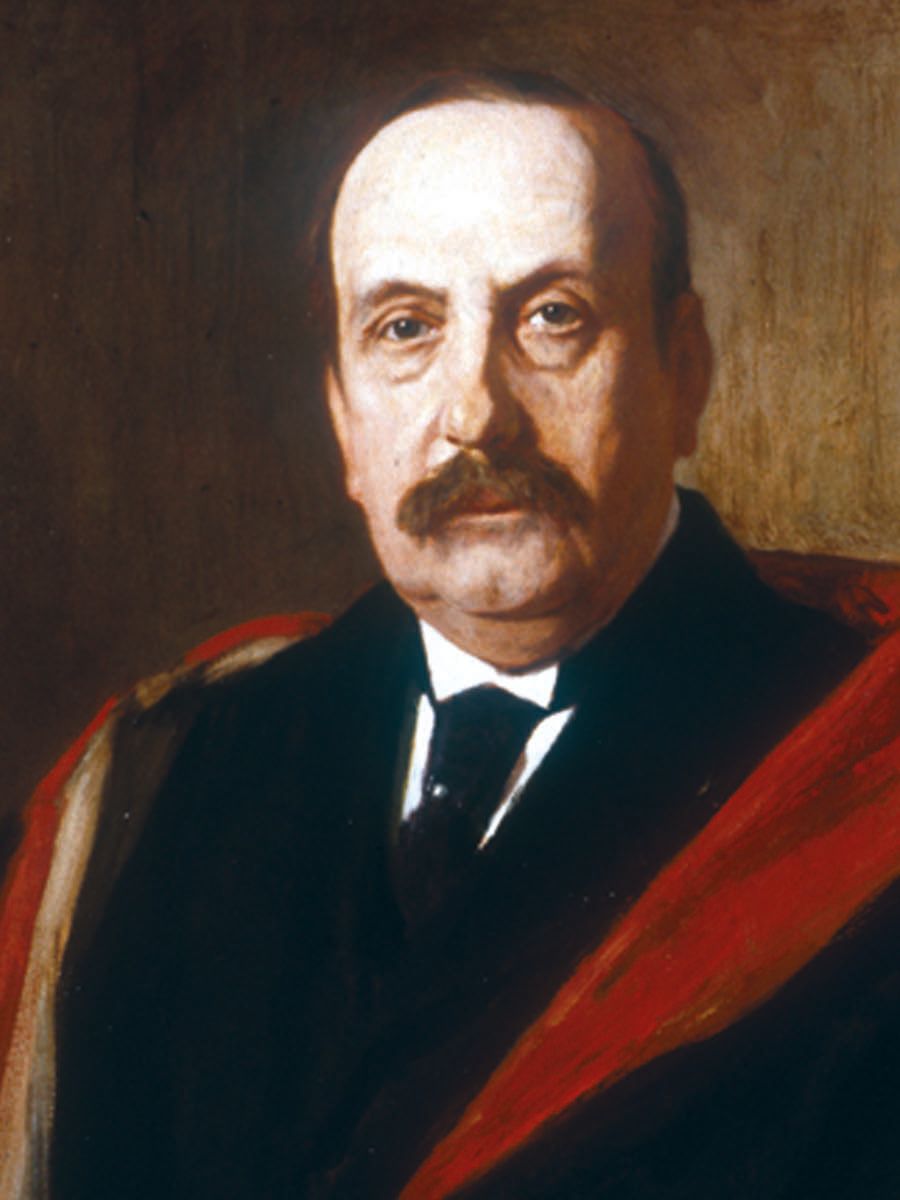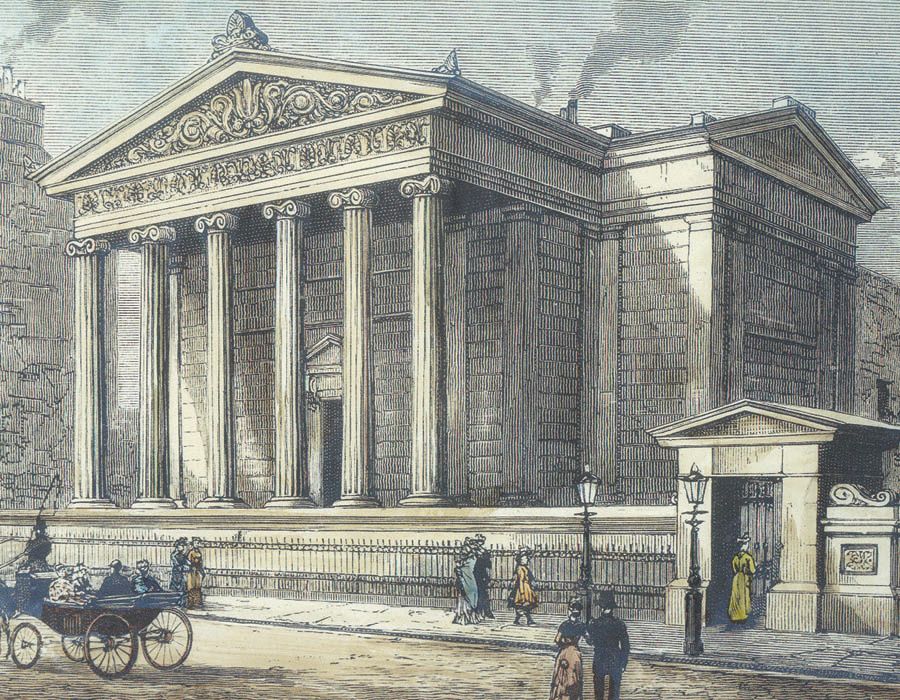Fresh look
at diversity
Reinterpreting gender inequality in our heritage

Jacqueline Cahif: RCSEd Archivist
Afundamental mission of the Royal College of Surgeons of Edinburgh is to “continually evaluate how we can improve … to achieve greater equality and diversity … and ensure positive change”. This core value is important to the Heritage team, not only in our work practices, but our wider objective to preserve and share our 500-year history. Embracing diversity and inclusivity means not just highlighting the inclusion of more diverse groups in our institutional history, but unpicking and reassessing established narratives around those groups.
An unexplored and fascinating student petition to the College in our 1870 Minute Book provides the opportunity to rethink how we place gender inequality in the story of our heritage. By using the petition as a framework, we can reinterpret a much-lauded landmark in our history, when the RCSEd first licensed a woman in medicine and surgery in 1886.
The Petition
On 12 December 1870, members of College Council attended a meeting presided over by President James Donaldson Gillespie (1824–1891). Attendees included some of Edinburgh’s most distinguished surgeons: Joseph Lister (1827–1912), Patrick Heron Watson (1832–1907), Peter David Handyside (1808–1881), Andrew Wood (1810–1881) and Henry Duncan Littlejohn (1826–1914), among others. During the meeting, a petition signed by 66 extramural students was read out to Fellows:
“Firstly That several of the lecturers at the Royal College of Surgeons have admitted women into their classes without the least endeavour to ascertain the opinion of the male students…
Secondly That the presence of women at the classes of anatomy and surgery, and in the dissecting room of the College, gives rise to various feelings which tend to distract the attention of the students from important subjects...
Thirdly That as the institution of mixed classes had not been determined upon when many of the present students attached themselves to this school of medicine, we are of opinion that those gentlemen who commenced their studies under the old system have suffered a certain breach of Contract…
Fourthly That the presence of women in the classes of the Royal College of Surgeons has produced and cherished a feeling of discord which threatens to lead to very serious consequences.”
Written in the wake of the Surgeons’ Hall Riot, the petition was created when tensions were running high. While there is already a massive scholarship on the riot, a summary will help contextualise the petition.
The Surgeons’ Hall Riot
In November 1870, the College became entangled in an ongoing dispute between the University of Edinburgh and the Edinburgh Seven, a group of women who matriculated in 1869 to study medicine, the first to do so at a British university. Led by Sophia Jex-Blake (1840–1912), the women sought access to lectures and clinical instruction under the same terms as male students. They were subjected to an intense campaign of intimidation and derision by fellow male students who rejected mixed classes.
The hostile environment wasn’t encouraged solely by students. Professor of Medical Jurisprudence and President of the Royal College of Physicians Robert Christison (1797–1882) was essentially running a cartel of opposition lecturers. Tactics included threats to blackball teaching staff who did not support his views that women should not be allowed to study medicine. The Edinburgh Seven began attending mixed-sex extramural classes at the College after university lecturers, led by Christison, closed ranks against them. Extramural teaching prepared students for the diploma examinations of the Edinburgh Royal Colleges.
On 18 November 1870, when the women arrived for an anatomy exam at the College, in Jex-Blake’s words: “We walked straight up to the gates, which … were slammed in our faces by a number of young men … passing about bottles of whisky, while they abused us.”
Despite such violent opposition, allegedly initiated by Christison’s assistant, the Edinburgh Seven successfully sat and passed the exam.

Patrick Heron Watson voted against the petition against mixed classes
Patrick Heron Watson voted against the petition against mixed classes
The College responds
Returning to the petition, during the 12 December College meeting, the President also communicated his reply to the petitioners, in which he stated that while the College was interested in the success of the extra-academical classes, it had no direct control over the Association of Extramural Lecturers, “who occupy the premises at Surgeons’ Hall, and are merely tenants of the College”.
Bearing in mind many of these lecturers also sat on College Council, this was a crafty response, redirecting responsibility from the College onto the lecturers as a separate, although related, body. For want of a better term, it appeared to be a ‘cop-out’.
Andrew Wood was not impressed with this neutrality and put forward a motion that “it is neither proper nor expedient that males and females should be associated together … either in hospitals or in classes”.
The two most vocal supporters of the Edinburgh Seven couldn’t let this lie: four days later, “an amendment was moved by Dr Handyside and seconded by Dr Watson. That it is in the opinion of the College it is not expedient that the College come to any resolution in regard to mixed classes”. The resulting vote was a strong defence for the petitioners: 31 Fellows voted in favour of Wood’s proposal, with four against and two abstentions.
RCSEd Fellows: supporters and detractors
While the names of the petitioners are revealed in the minutes, there is no indication how individual Fellows voted, although some are easy to predict.
Few names in the history of surgery inspire the glorification attached to Joseph Lister. However, his progressive ideas on antiseptic surgery did not translate to his views on female medical students, which are now generally interpreted as a significant blot on his otherwise unblemished copybook. As late as 1908 Lister was referring to mixed classes as “perfectly monstrous”. As lecturers who welcomed women to their anatomy and surgery classes at Surgeons’ Hall, there is no doubt Watson and Handyside disagreed with Lister and the majority, and biochemist Arthur Gamgee (1841–1909) almost certainly voted with them.
The fourth minority voter is unclear. Littlejohn would later teach at Jex-Blake’s School of Medicine for Women, which opened in 1886. Yet when Lilian Lindsay (1871–1960) became the first woman to enrol as a dental student in 1892, Littlejohn admonished her for “taking the bread out of some poor fellow’s mouth”.

Surgeons’ Hall in Victorian times – a bastion of male domination
Surgeons’ Hall in Victorian times – a bastion of male domination
Joseph Bell (1837-1911) is also a contender. In the 1880s he became one of the most vocal campaigners for the rights of women to enter the medical profession. However, in 1872, he submitted a letter to the Royal Infirmary Board of Management opposing mixed clinical classes, owing to “considerations of decency”. He did add a disclaimer: “I can see no difficulty whatever in the female students obtaining a qualifying course [separately] at the Chalmers Hospital.” So he was not against women’s clinical training but, rather, regarded the propriety of mixed classes as a more delicate business.
The Board’s consultation provides a useful framework to gauge more widely the views of RCSEd Fellows absent for the vote. For example John Duncan FRCSEd (1839–1899) said: “I am in no way opposed to female medical education … that I should even be glad were a means provided whereby those females who wish it may receive such an education.”
There are several similar examples, illustrating that along with more prominent supporters there were others among our membership with more open-minded views, but opposed to mixed teaching in hospitals rather than medical education of women per se.
“It is regrettable the College did not follow the Irish College’s lead in 1876, whether through risk aversion or an unwillingness to budge”
It would also be reasonable to presume that other Fellows supported the Edinburgh Seven, but were disinclined to put their heads above the parapet, especially given the potential damage Christison could do to their career. Jex-Blake later claimed: “Several … managers were liberal minded … one of those who had voted against our admission confessed to me that he had been guided simply by the medical members of the Board.”
It is therefore possible that Christison’s underhand tactics around the Edinburgh teaching community accounted for the high number of RCSEd Fellows who voted in favour of the petitioners’ demands.
Where did this leave the College? The purpose of the vote is ambiguous and appears to have had limited influence. An anonymous letter to The Scotsman on 22 December 1870 complained that “a vote by so important a body may be expected to carry weight, I write to inquire … by what means they propose to give effect to their opinion”. Yet the following week another letter was published discrediting the petitioners, claiming a number had not attended mixed classes, and “the various feelings so pathetically deprecated were the result of imagination rather than experience”. It concluded that the petitioners “are a comedy”. This may have saved the College from airing an official stance, preferring neutrality. However, this non-committal position soon changed.
Jex-Blake and the Russell Gurney Enabling Bill
By 1873 the University Medical Faculty had fully excluded the Edinburgh Seven and they took medical degrees elsewhere in Europe. Their qualifications were still not registerable with the GMC and Jex-Blake took her fight to Westminster. Russell Gurney MP (1804–1878) brought forward a private member’s bill to “remove the restrictions on the granting of qualifications for registration under the Medical Act on the grounds of sex”.
The College was consulted, but unwilling to bend to mounting pressure. Littlejohn, by now President, laid forward the College’s position, arguing that it would be “inconsistent with the great object sought to be obtained by the existing Medical Act” and that the House should “take such means that will prevent the bill in question being proceeded”. Nevertheless, the Enabling Bill passed with relative ease, empowering all 19 licensing bodies to grant qualifications and entry to the Medical Register “to all persons without distinction of sex”.
The Medical Act (1876) represented a crucial break with outdated thinking on women’s place in professional medicine, because in theory it should have permitted women access to medical examinations.
A successful outcome for female medical students in Scotland? Not quite. The influence of the act was constrained by its non-obligatory terms, which did not compel institutions to admit women, but merely empowered them to do so should they wish. Women were therefore at the mercy of individual institutions. The King and Queen’s College of Physicians of Ireland (later the RCPI) immediately opened its Licentiate examination, and in January 1877 became the first medical body in Britain and Ireland to award a registerable medical qualification to a woman, Eliza Walker Dunbar (1845–1925). Hot on the heels of the Irish College, in 1878 the University of London adopted a new charter admitting women to degree examinations.
It took another decade before women were able to access medical examinations in Scotland when the College established the Triple Qualification (TQ) scheme conjointly with the Royal Colleges of Physicians of Edinburgh and the Faculty of Physicians and Surgeons of Glasgow. Alice Ker (1853-1943) become the first female Licentiate of all three Colleges in July 1886, which made her the first woman in Scotland to qualify in medicine and surgery.
Progressive by default
Because the Scottish universities did not produce their first female medical graduates until 1894 – almost another decade later – there is a tendency to frame the Colleges with a progressive agenda because they were the first to offer a feasible route to female medical qualification.
However, the TQ scheme had been extended to women more by happenchance than altruism. The intercollegiate ties were strengthened through fear of encroachment by the universities and potential GMC reform, which threatened to strip power from the Colleges to create a single medical authority. There were several other contributory factors, but liberality was not one of them.
In her official College history Famous and Flourishing Society: The History of the Royal College of Surgeons of Edinburgh, 1505–2005, College historian Helen Dingwall surmises: “Viewed from a distance the College seems reactionary and unwilling to ‘move with the times’. However, that is precisely the point – it reacted to its times, and once legislation was introduced to allow women to take medical qualifications, the TQ was immediately opened to them.”
This is misleading: the TQ wasn’t immediately opened to them and the College’s exclusion of women during the 10-year period from 1876 has been glossed over.
It could be argued that a venerated institution such as the RCSEd should have chosen a bolder path and followed the example of the Irish College which, for whatever reason, took meaningful steps in pushing boundaries in gender equality. It would be easy to consign the College’s position to being ‘of its time’ and dictated to by Victorian convention. However, this overlooks lecturers who were supportive of women in medicine in principle. It is regrettable that the College did not follow their lead when the opportunity arose in 1876, whether through risk aversion or an unwillingness to budge because they found the crusade of medical women too radical.
The College was unambiguously more explicit in its hostility to women seeking admission to the Fellowship, which is another story.
Conclusion
As College Archivist, I am guilty of boasting that we were the first in Scotland to license women in medicine and surgery, which should, of course, be celebrated. Yet the fact remains that after the passage of the landmark 1876 Medical Act, the College dragged its heels for another decade before admitting women to its Licentiateship. The question of why we did not take advantage of the terms of the Enabling Act warrants further research.


